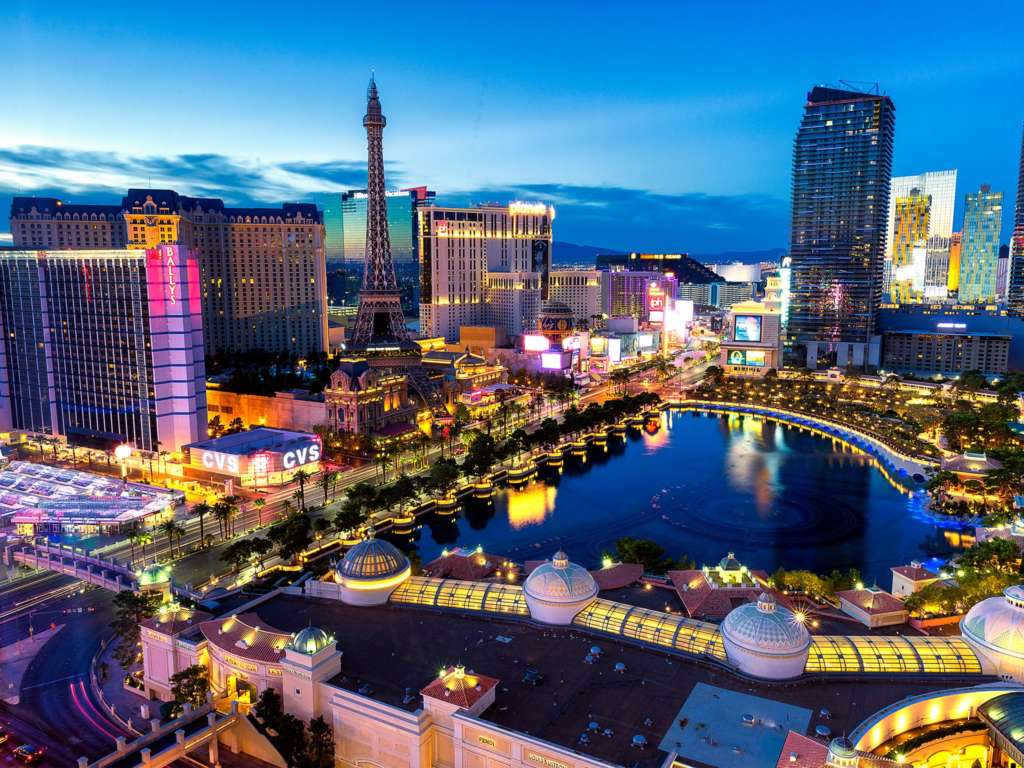
Las Vegas. This Nevada city may only be just over a century old, having been officially incorporated into the United States of America in 1911, but throughout those decades it has firmly established itself as the “Entertainment Capital of the World”.
An epicentre of adult entertainment, the city is synonymous with glamorous mega-casinos, lavish hotel resorts, and a bustling, neon covered strip. But beyond the pleasure palaces, are there any buildings of note to be found here?
The truth is Las Vegas is actually a fascinating mixture of modern, world-class design and some of the tackiest buildings in the world (Caesar’s Palace, anyone?). And while nothing will change Sin City’s reputation as the “Mecca” of entertainment, poker, and casinos, there’s plenty of fascinating architecture here to discover.
Keep Memory Alive Event Center, West Bonneville Avenue.
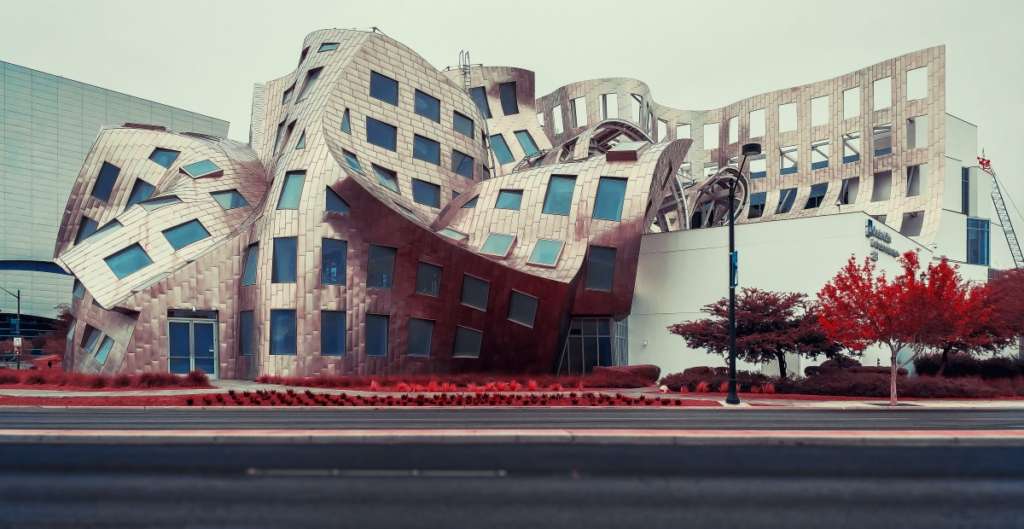
This remarkable Las Vegas landmark was designed by the distinguished architect, Frank Gehry, the famous creator of the Guggenheim Museum and the Walt Disney Concert Hall. Whilst the name of the building doesn’t exactly roll off the tongue, it’s nevertheless one of the most popular premier event centers in Nevada.
Constructed from a total of 199 glass windows, built into a stainless steel frame, this 9,200 square foot surrealist marvel even houses a 20-foot artwork by James Rosenquiest that is said to be worth $3 million.
In keeping with its name, the center also has a strong philanthropic component, with a
percentage of proceeds from event bookings being donated to the Cleveland Clinic Lou Ruvo
Center for Brain Health.
Huntridge Theatre, East Charleston Boulevard
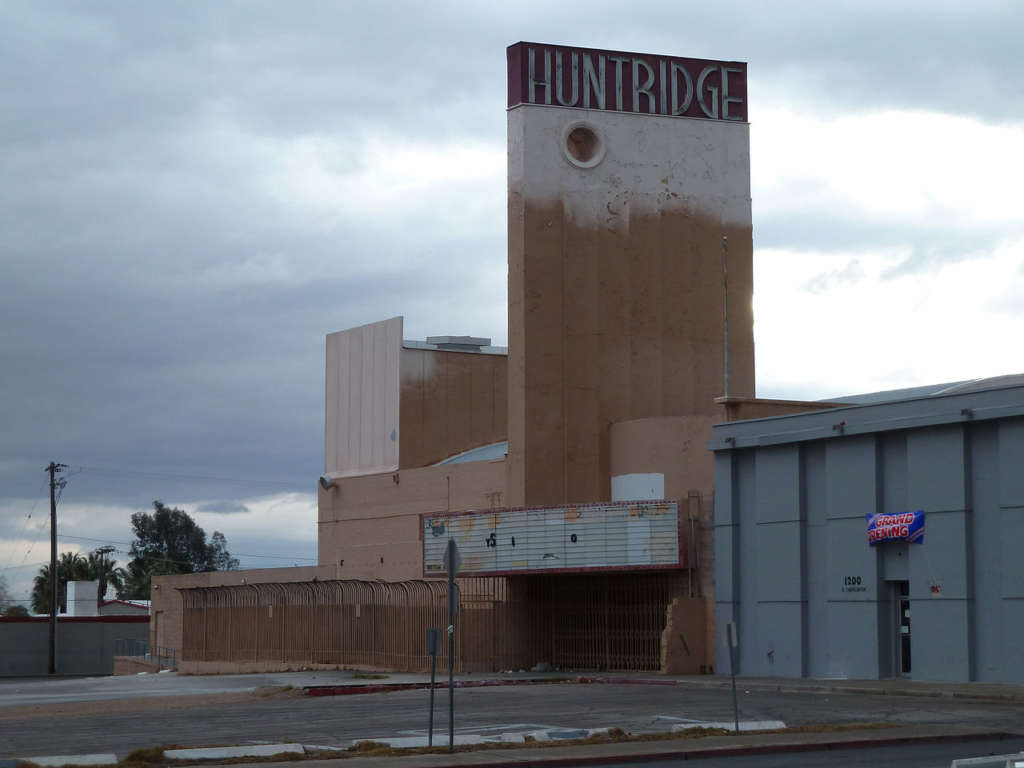
The future of this historic performing arts space may be uncertain after it was purchased for $4 million by a developer last year, but for the time being at least her gorgeous exterior and that iconic sign remain for us to admire.
Designed by renowned motion picture theater designer, L, S. Charles and opened in 1994, the Huntridge was first used as a cinema. It was purchased in 1951 by the Huntridge Theater Company, an organization that was partially owned by screen legends Loretta Young and Irene Dunne, and transformed into a theater and performing arts space.
For almost half a century, it was the centerpiece of live entertainment in (what was then) a small town, playing an important role in the civil rights movement as the first non-segregated theater in Las Vegas.
Neon Museum, Las Vegas Boulevard North
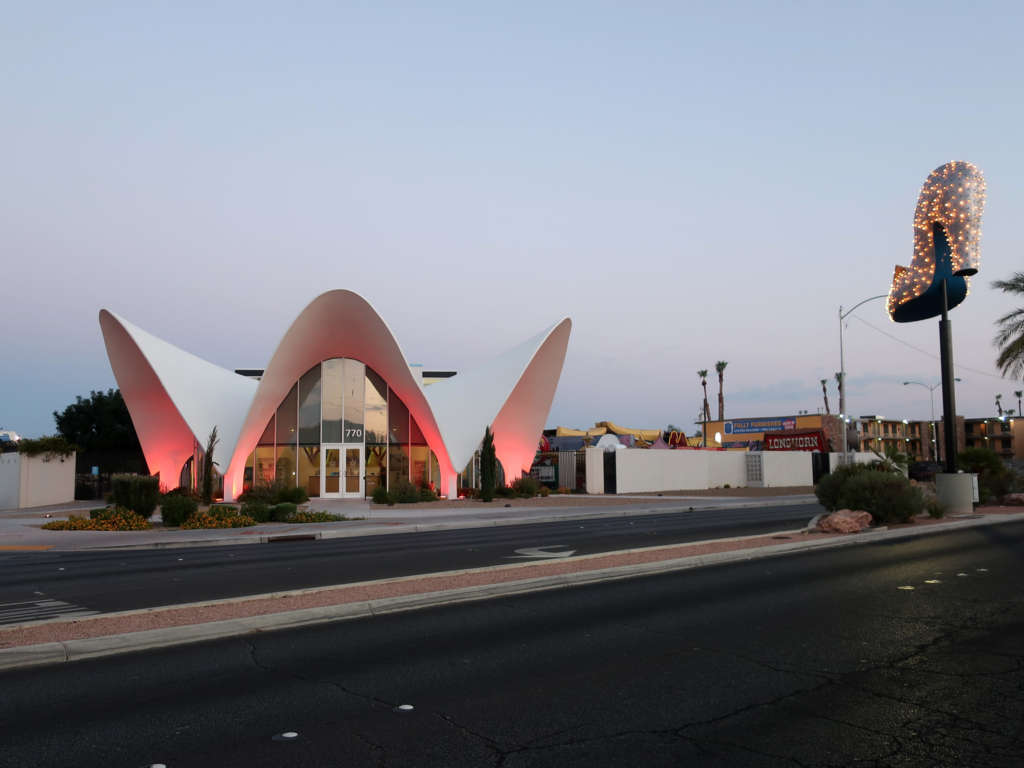
The contents of the Neon Museum are a wonder unto themselves. A real treasure trove of signage, there’s even a neon sign “boneyard” filled with dilapidated wonders from Sin City’s yesteryears. However, it’s the entrance building itself that will be of most interest to design enthusiasts.
This exemplar of Googie architecture was completed in 1961 to designs specified by the prolific Hollywood and Vegas architect, Paul Revere Williams. In its first incarnation, the building that now stands today formed the lobby of the La Concha Motel. While the rest of the building was deconstructed in 2006, the motel’s impressive, curved-concrete frontage was put to use preserving another important element of Las Vegas’s history.
Hugh Taylor’s Morelli House, East Bridger Avenue
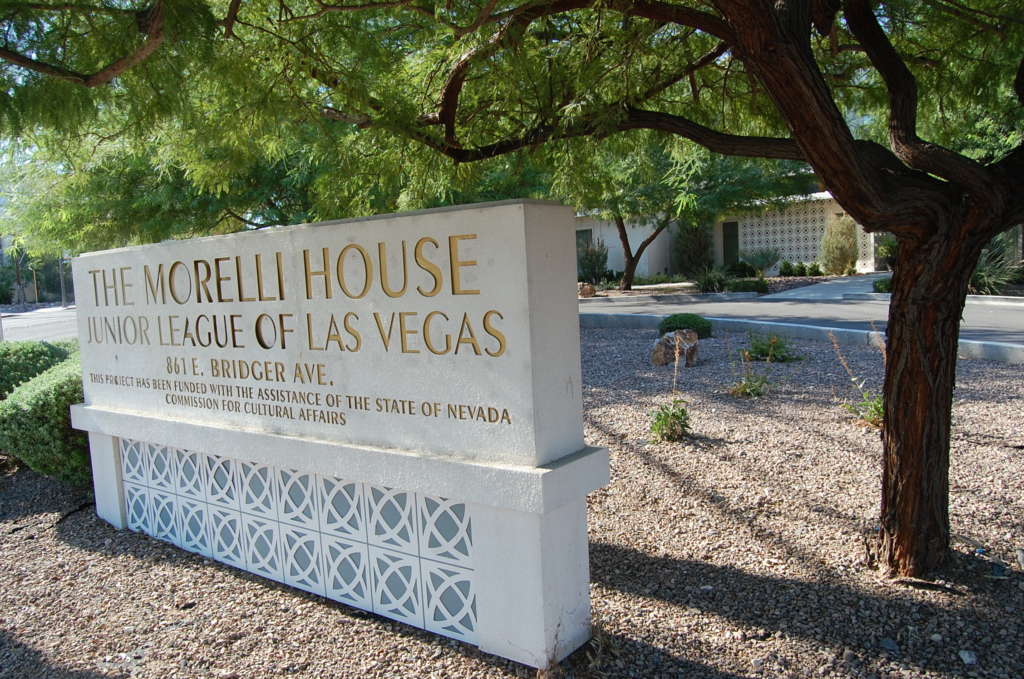
Built in 1959 for the Sands Hotel and Casino Copa Showroom’s musical director, Antonio Morelli, this showpiece of mid-twentieth-century modern design was created by Las Vegas native, Hugh Taylor. With its open plan style, glass walls, and strong horizontal features, this house epitomizes everything you would associate with the mid-century high life, including its impeccable style.
Interestingly, the house was originally built on Country Club Drive, in the (since demolished) Desert Inn Estates housing development. Thankfully, however, it was painstakingly rebuilt on a this corner of downtown Vegas and left to the care of the Junior League of Las Vegas, who now use the building as their HQ and run guided tours.
The Guardian Angel Cathedral, Cathedral Way
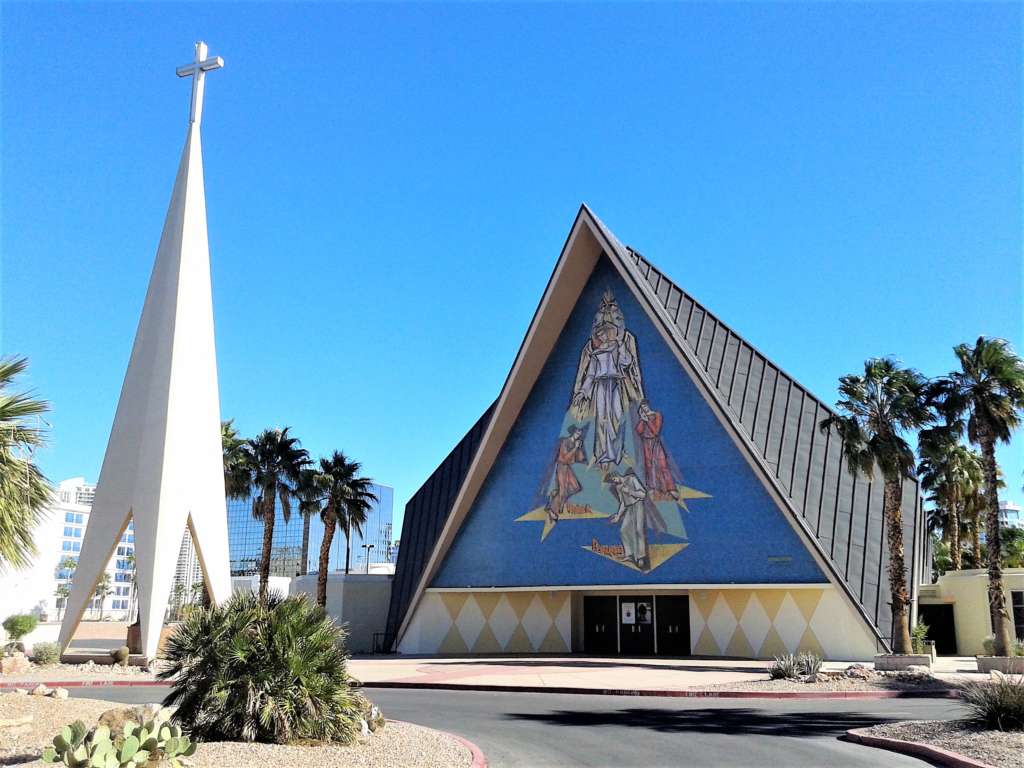
Amidst the casinos and showgirls, another well-known side to Las Vegas is that of the “wedding capital of the world”. Befitting a city with such a nickname, wedding chapels are ten a penny here, but none are quite as spectacular or memorable as the Guardian Angel Cathedral. And in true Vegas style, its history is just as colorful as the city in which it stands.
Another Paul Revere Williams masterpiece, the cathedral was actually built on land donated by Moe Dalitz, aka Mr. Las Vegas. The owner of the Desert Inn Casino (and a rumored gangster), Dalitz donated the land in part to having a place of worship for his employees within close proximity to his cathedral. Now open to the public, the Guardian Angel is much admired for its Edith Piczek mural and immense stained glass windows.




